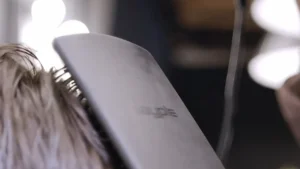
What Are the Types of Hair Extensions and How to Choose
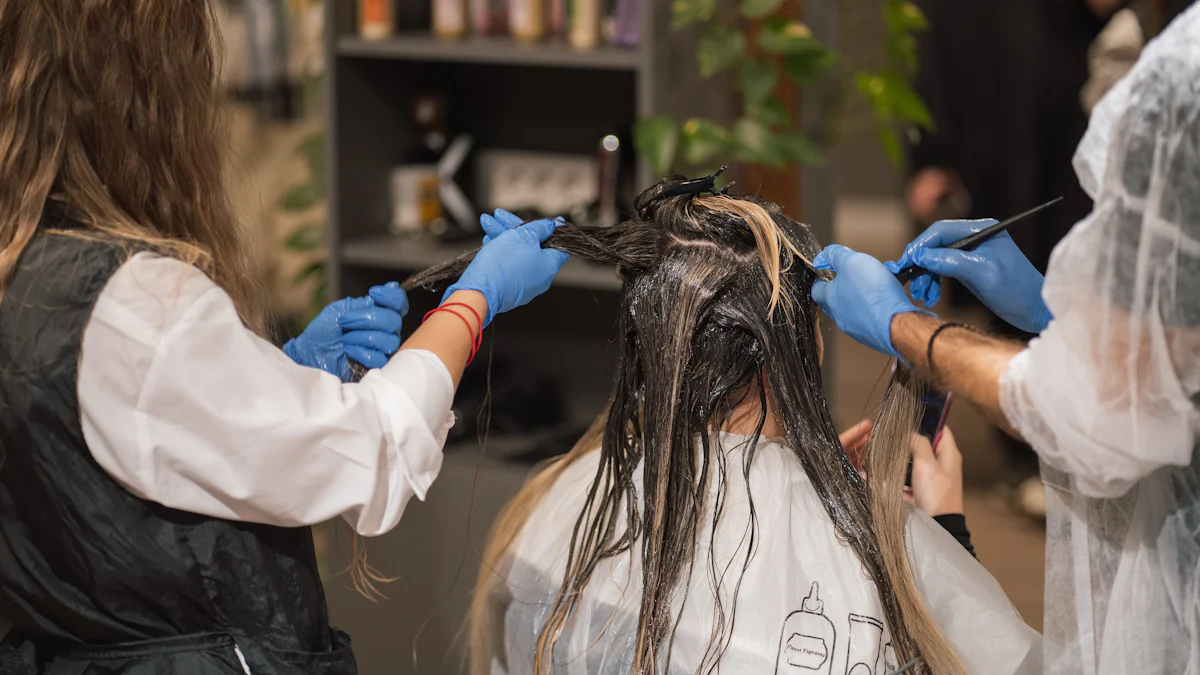
Hair extensions are a game-changer when you want to transform your look. They let you add instant length, volume, or even a pop of style without waiting for your hair to grow. Whether you’re after Clip-In Hair Extensions for quick fixes, Tape-In Hair Extensions for a seamless blend, or Halo Hair Extensions for a non-damaging option, there are various types of hair extensions to suit your needs. Extensions offer versatility, a natural look, and even a confidence boost. Choosing the right type depends on your hair type, lifestyle, and the quality you’re after. With so many options available, finding the perfect match has never been easier.
Different Types of Hair Extensions
Clip-In Hair Extensions
Clip-in hair extensions are one of the easiest ways to transform your hairstyle. These extensions come with small clips attached to the wefts, making them super simple to apply and remove. You can add length, volume, or even highlights in just a few minutes. Clip-ins are perfect for beginners or anyone who wants a temporary change without committing to a permanent option.
The materials used for clip-in hair extensions vary. For example, Chinese hair is durable and easy to style, while Indian hair offers a softer texture. European hair is luxurious but more expensive. Synthetic options, like chemical fibers, are budget-friendly but less natural-looking. This variety ensures you can find clip-ins that match your hair type and budget.
If you’re looking for versatility, clip-in hair extensions are a great choice. You can wear them for special occasions or daily use. Plus, they’re reusable, so you get more value for your money.
Tape-In Hair Extensions
Tape-in hair extensions are a semi-permanent option that blends seamlessly with your natural hair. These extensions use adhesive strips to attach to your hair, creating a smooth and natural look. Tape-ins are lightweight and lie flat against your scalp, making them comfortable to wear.
While they’re less expensive than sew-in hair extensions, tape-ins require professional installation. They typically last six to eight weeks before needing adjustment. If you want a long-lasting yet low-maintenance option, tape-in hair extensions might be the right fit for you.
Sew-In Hair Extensions
Sew-in hair extensions, also known as weave hair extensions, are a durable and versatile option. A stylist braids your natural hair into cornrows and sews the extensions onto the braids using a needle and thread. This method works best for thicker hair types, as it provides a secure base for the extensions.
Sew-ins can last up to two months with proper care, making them a long-lasting choice. However, they require professional installation and regular maintenance. The cost of sew-in hair extensions ranges from $100 to $600, depending on the quality and length. While they’re more expensive than tape-ins, they offer excellent durability and a natural look.
If you’re looking for a reliable, long-term solution, sew-in hair extensions are worth considering.
Fusion Hair Extensions
Fusion hair extensions are a fantastic option if you’re looking for a long-lasting and natural-looking solution. These extensions use either keratin bonds or adhesive bonds to attach to your natural hair. Keratin bonds, made from natural protein, mimic the structure of your hair’s cuticle. This gives you a seamless blend and makes the extensions more durable. Adhesive bonds, on the other hand, rely on heat-activated glue for attachment. With proper care, fusion extensions can last several months, making them one of the most durable types of hair extensions.
The application process for fusion extensions is meticulous and requires a professional stylist. Each strand is bonded to your natural hair using a heating tool. While this method takes time, the results are worth it. You’ll enjoy a natural look that moves and feels like your own hair. However, keep in mind that the heat application can cause some damage if not done correctly. Regular maintenance is also essential to keep your extensions looking their best.
Fusion hair extensions are ideal if you want a semi-permanent option and don’t mind investing time in the application process. They’re perfect for special occasions or everyday wear, giving you the freedom to style your hair however you like.
Microbead Hair Extensions
Microbead hair extensions, also known as micro-link hair extensions, are a heat-free and chemical-free option. These extensions are applied by attaching individual strands of hair to your natural hair using small metal loops. A skilled stylist loops the extension through a section of your hair and secures it with pliers. This method is gentle on your hair since it doesn’t involve glue, heat, or braiding.
One of the best things about microbead extensions is their adjustability. If they start to grow out, your stylist can reposition them without replacing the entire set. They’re also reusable, which makes them a cost-effective choice in the long run. However, they do require regular maintenance to prevent the beads from slipping or causing tangles.
Microbead hair extensions work well for most hair types, but they’re especially great if you want a non-damaging option. They’re lightweight and comfortable, so you can wear them daily without feeling weighed down.
Halo Hair Extensions
Halo hair extensions are a game-changer if you want a non-damaging and easy-to-use option. These extensions sit on top of your head, supported by a thin, clear wire. Unlike other methods, they don’t require clips, glue, or weaving, so they won’t stress or pull on your natural hair.
Here’s why halo extensions stand out:
They’re virtually undetectable, blending seamlessly with your natural hair.
They add effortless length and volume without any commitment.
They’re perfect for beginners or anyone who wants a quick, damage-free solution.
To apply halo extensions, you simply place the wire around your head like a headband and adjust it to fit. It’s that simple! They’re ideal for special occasions or whenever you want to switch up your look without visiting a salon. Plus, they’re reusable and easy to maintain, making them a practical choice.
If you’re looking for a gentle, hassle-free way to enhance your hair, halo hair extensions are worth considering.
Features, Pros, and Cons of Hair Extensions
Real Human Hair Extensions vs. Synthetic Extensions
When choosing between real human hair extensions and synthetic hair extensions, understanding their differences can help you make the right decision. Here’s a quick comparison:
Feature | Human Hair Extensions | Synthetic Extensions |
|---|---|---|
Appearance | Natural feel, blends seamlessly with natural hair | More artificial shine and feel, easier to spot as fake |
Texture | Soft and similar to natural hair | Often coarse and less natural |
Styling Flexibility | Can be styled, colored, and treated like natural hair | Limited styling options, may melt with heat |
Longevity | Lasts 1-3 years with proper care | Typically lasts a few months |
Real human hair extensions offer unmatched quality and versatility. You can style them with heat tools, dye them, or treat them just like your own hair. Synthetic options, while more affordable, lack the same natural look and feel. They also have limited styling options since heat can damage them.
From an environmental perspective, synthetic hair extensions are less sustainable. They’re made from plastics like acrylic and polyester, which rely on fossil fuels and take centuries to decompose. When discarded, they contribute to landfill waste and can break down into microplastics, harming marine life. Real human hair extensions, on the other hand, are biodegradable and renewable. Choosing ethically sourced human hair is a more eco-friendly option.
Benefits of Clip-In Hair Extensions
Clip-in hair extensions are a favorite for many, and it’s easy to see why. They’re simple to use, reusable, and perfect for temporary changes. Whether you want to add volume for a special event or experiment with highlights, clip-ins let you switch up your look in minutes. Plus, they don’t require professional installation, saving you time and money.
Another big advantage is their non-damaging nature. Unlike bonded hair extensions or weaves, clip-ins don’t involve glue, heat, or tight braiding. This makes them a safer choice for your natural hair. You can also remove them whenever you want, giving your hair a break. If you’re new to extensions, clip-in hair extensions are a great starting point.
Drawbacks of Tape-In Hair Extensions
Tape-in hair extensions, while popular, come with a few downsides. First, they require professional installation, which adds to the overall cost. The adhesive strips need careful placement to ensure a seamless blend with your natural hair. If not done correctly, they can look unnatural or even slip out.
Maintenance is another consideration. Tape-ins typically last six to eight weeks before needing adjustment. During this time, you’ll need to avoid oil-based products near the adhesive, as they can weaken the bond. For some, this level of upkeep can feel restrictive. Additionally, tape-ins may not be the best choice if you have fine or thin hair, as the adhesive can sometimes cause stress on your strands. While they’re not the most damaging type of hair extension, they do require careful handling to avoid issues.
Longevity of Sew-In Hair Extensions
Sew-in hair extensions are a reliable choice if you’re looking for something long-lasting. With proper care, they can stay in great condition for 6 to 8 weeks before needing removal and reinstallation. This makes them a fantastic option for anyone who wants a semi-permanent solution without frequent salon visits.
To maximize their lifespan, you’ll need to follow a few simple steps:
Use sulfate-free shampoo and conditioner to gently clean your extensions. Always detangle from the ends to the roots to avoid breakage.
Wrap your hair in a satin bonnet or scarf at night to prevent tangling.
Wash your sew-ins every two weeks to maintain their texture and shine.
Apply moisturizing products regularly to keep the extensions hydrated.
Use a heat protectant when styling to avoid damage from hot tools.
Wear a swim cap when swimming to protect against chlorine or saltwater.
Deep condition weekly to keep the extensions soft and manageable.
By sticking to these tips, you’ll keep your sew-ins looking fresh and natural for weeks. They’re a great option if you want durability and a polished look.
Maintenance Requirements for Fusion Extensions
Fusion hair extensions are one of the lowest maintenance hair extensions you can choose. Once installed, you can stick to your usual daily styling and washing routine. You don’t need any special products or techniques, which makes them perfect for busy lifestyles.
To keep your fusion extensions in top shape, use gentle, sulfate-free shampoos to avoid stripping natural oils. Limit washing to two or three times a week, and after washing, towel dry gently. Avoid rough handling, and use a wide-tooth comb to detangle your hair. These simple steps will help your extensions last longer and maintain their natural look.
However, it’s important to know the potential risks. Fusion extensions use keratin glue or heat for attachment, which can sometimes cause scalp irritation or heat damage to your natural hair. The added weight of the extensions may also create tension, leading to discomfort or even hair loss if not installed properly. Despite these risks, fusion extensions remain a convenient and long-lasting option for many.
Non-Damaging Options Like Halo Extensions
If you’re worried about damaging your natural hair, halo hair extensions are a fantastic choice. These flip-in hair extensions sit on your head using a clear wire, so there’s no need for glue, heat, or clips. This makes them one of the most non-damaging options available.
Some people think halo extensions look unnatural or feel uncomfortable, but that’s not true. High-quality halo extensions made from real human hair extensions blend seamlessly with your natural hair. When adjusted properly, they’re lightweight and comfortable to wear. Plus, they’re super easy to use. Just place the wire around your head like a headband, and you’re ready to go.
Halo extensions are also low-maintenance. Basic care, like washing and detangling, is similar to caring for your natural hair. They’re reusable and perfect for anyone who wants a quick, damage-free way to add length and volume. Whether you’re new to extensions or just want a hassle-free option, halo extensions are worth considering.
How to Choose the Best Type of Hair Extensions
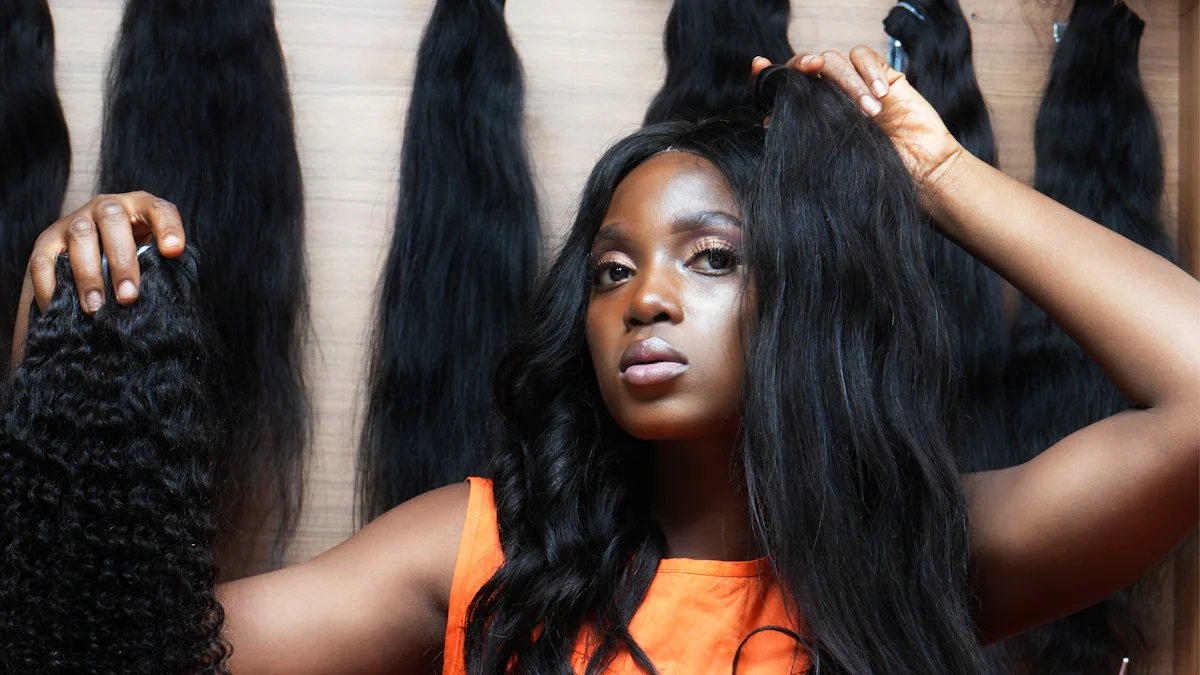
Matching Extensions to Your Hair Type
Finding the right match for your hair type is key to achieving a natural look. Here’s how you can make the best choice:
If your hair is silky and smooth, go for Remy human hair extensions. They blend seamlessly and maintain a natural texture.
For coarser hair, yaki or kinky straight extensions are ideal. They mimic the texture of natural, coarser hair.
Medium-textured hair pairs well with body waves or loose curls. These options add volume while maintaining a cohesive appearance.
Match the extensions to your root color for a flawless blend. If you want extra dimension, consider balayage or highlighted extensions.
High-quality extensions, especially those made from human hair, provide the most realistic results. If you’re unsure, consult a stylist. They can help you select the perfect texture and color for your hair.
Considering Your Lifestyle and Maintenance Preferences
Your lifestyle plays a big role in choosing the right extensions. Ask yourself: How much time can you dedicate to maintenance? If you prefer something quick and easy, clip-ins are a great option. They’re simple to apply and remove, making them perfect for occasional use. Tape-in hair extensions, on the other hand, offer a semi-permanent solution. They’re ideal if you want a natural look without daily effort.
For active lifestyles, sew-in extensions provide durability. Fusion extensions work well if you’re looking for a long-lasting style but don’t mind a more involved application process. Halo extensions are perfect for anyone who wants a non-damaging, low-maintenance option.
Here’s a quick guide to help:
Attachment Method | Description | Ideal For |
|---|---|---|
Clip-In Extensions | Easy to apply and remove, ideal for temporary style changes. | Those seeking flexibility |
Provide a semi-permanent solution lasting 6-8 weeks with a natural appearance. | Moderate maintenance commitment | |
Sew-In Extensions | Utilize a braiding technique for long-term wear, perfect for durability. | Active lifestyles |
Fusion Extensions | Offer a semi-permanent solution by fusing the extensions to your natural hair. | Long-lasting styles |
Micro-Link Extensions | Provide a semi-permanent option using small metal rings to attach extensions. | Versatile styling options |
Think about your daily routine and how much effort you’re willing to put into upkeep. This will help you narrow down your options.
Budgeting for Hair Extensions
Hair extensions come in a wide price range, so it’s important to set a budget. Clip-in hair extensions typically cost between $200 and $600. Tape-in extensions range from $200 to $1,000, while sew-ins can cost anywhere from $300 to $2,500. Fusion extensions are on the higher end, with prices ranging from $600 to $3,000.
If you’re looking for a more affordable option, synthetic extensions might fit your budget. However, they don’t offer the same quality or longevity as human hair extensions. Professional services can also add to the cost, especially at high-end salons.
To budget effectively, consider the initial cost and ongoing maintenance. Extensions like clip-ins are reusable, making them a cost-effective choice in the long run. Tape-ins and sew-ins require regular adjustments, so factor in salon visits when planning your expenses.
By understanding your financial limits and weighing the costs against your goals, you can find the best type of hair extensions that fit both your needs and your wallet.
Consulting a Professional Stylist
When it comes to choosing the right hair extensions, consulting a professional stylist can make all the difference. A stylist brings expertise and experience to the table, helping you avoid costly mistakes. They can guide you through the process, ensuring you pick extensions that match your hair type, lifestyle, and preferences.
Before your appointment, prepare a list of questions to get the most out of your consultation. Here are some key questions to ask:
What type of hair extensions are best for me?
How are the hair extensions applied and removed?
What maintenance do hair extensions require?
How long will my hair extensions last?
Can I style my hair extensions as usual?
Will hair extensions damage my natural hair?
How much do hair extensions cost?
Can hair extensions be colored?
How do I care for hair extensions at home?
What should I do if I experience discomfort or issues?
These questions will help you understand the process and set realistic expectations. A stylist can also assess your hair’s condition and recommend the safest options. For example, if your hair is fine or prone to breakage, they might suggest non-damaging options like halo extensions.
A professional stylist can also color-match your extensions perfectly. This ensures a seamless blend with your natural hair. Plus, they’ll teach you how to care for your extensions, so they stay looking great for as long as possible.
Don’t hesitate to share your concerns or preferences during the consultation. Whether you’re worried about damage, cost, or maintenance, a stylist can address your questions and help you make an informed decision. After all, their goal is to help you achieve the look you want while keeping your natural hair healthy.
Hair extensions offer endless possibilities to transform your look. From clip-ins to halo extensions, each type has unique features that cater to different needs. Whether you want a quick style change or a long-lasting solution, there’s something for everyone.
Choosing the right extensions isn’t just about looks. It’s about finding what works best for your hair type, lifestyle, and budget. High-quality human hair extensions blend naturally and last longer, while synthetic options are more affordable but less durable. Picking the right attachment method also ensures your extensions fit seamlessly into your routine.
Take your time to explore the types of hair extensions available. If you’re unsure, consult a professional stylist. They’ll help you make the best choice and guide you on proper care. With the right extensions, you’ll achieve a flawless look that feels like your own.
-
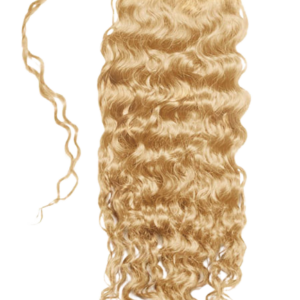
Any Color Any Length 100% Human Ponytail Hair Extensions
Rated 5.00 out of 5From $ 165.00 Select options This product has multiple variants. The options may be chosen on the product page -
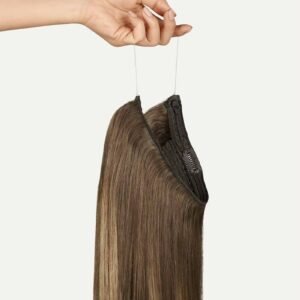
100% Any Color Any Length Halo Human Hair Extensions
Rated 5.00 out of 5From $ 165.00 Select options This product has multiple variants. The options may be chosen on the product page -
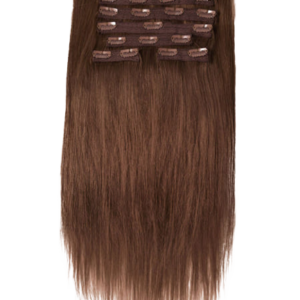
100% Human Hair Extensions Classic Clip Ins
Rated 5.00 out of 5From $ 165.00 Select options This product has multiple variants. The options may be chosen on the product page -
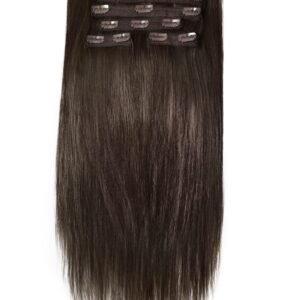
100% Human Hair Extensions Seamless Clip Ins
Rated 4.75 out of 5From $ 165.00 Select options This product has multiple variants. The options may be chosen on the product page

